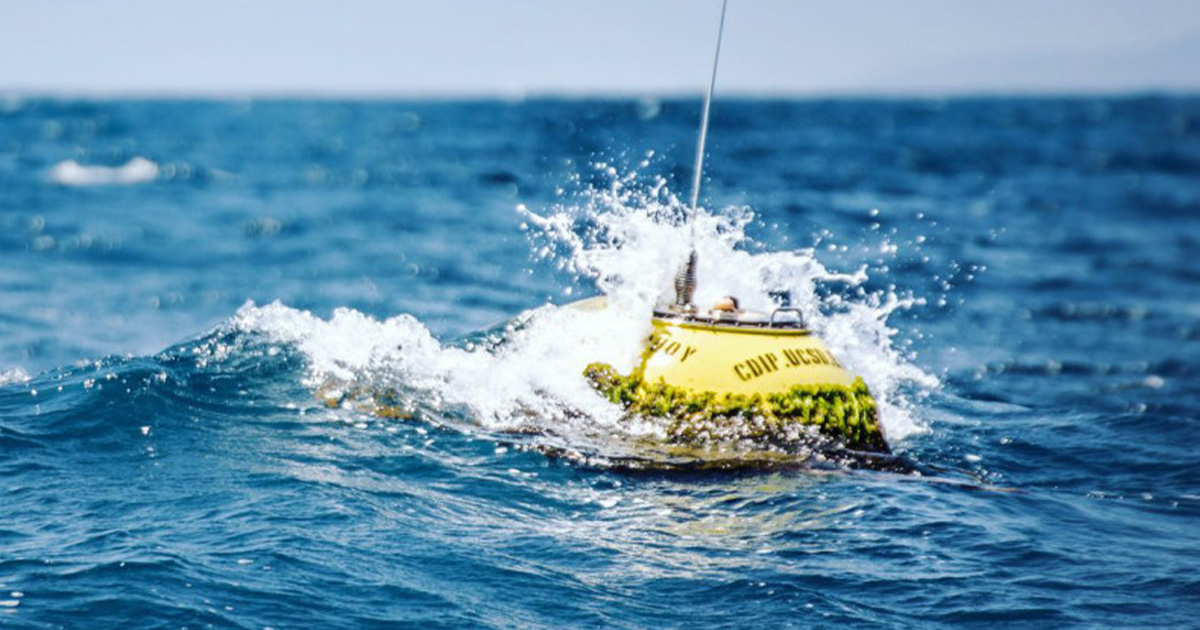Surfers have long known to find larger waves on a rising tide. But scientific confusion remained as to how this surface wave interaction with ocean tides happens—until now.
“We provide a theoretical and numerical model to explain these complex and often significant interactions,” said Allison Ho, a Ph.D. candidate in applied ocean science at UC San Diego’s Scripps Institution of Oceanography. “We hope this improved understanding will lead to more accurate forecasts to coastal and maritime communities who rely heavily on these models to prepare for inundation and navigate shipping ports.”
Ho and two Scripps Oceanography co-authors offer details in the American Meteorological Society's Journal of Physical Oceanography. The study was funded by the U.S. Army Corps of Engineers through its Coastal Ocean Data Systems (CODS) program.
“The tide is putting energy in or taking away energy from the surface waves. That’s the physical mechanism driving this,” said co-author Nick Pizzo, an oceanographer at the Scripps Oceanography Air-Sea Interaction Laboratory. “When you understand why, you can make a model to predict when. That’s what Alli’s work has done.”
Ho and Pizzo, along with co-author and physical oceanographer Sophia Merrifield, obtained their data from the Scripps Oceanography Coastal Data Information Program (CDIP), which monitors and predicts waves and shoreline change. Established in 1975, CDIP is also sponsored by the CODS program and the California Department of Parks and Recreation, and the data from the network are used by scientists, coastal engineers, planners, and marine enthusiasts. The network today consists of more than 75 moored buoy stations on both U.S. coasts, in the Gulf of Mexico, and in the Atlantic and Pacific oceans.
“In coastal environments, the measurements that CDIP makes with these buoys are of critical importance because these environments often have complex wave conditions that aren’t well modeled by wave forecasts,” Ho said. “As scientists, we’re interested in when those models don’t match up because that’s often where things get interesting.”
The researchers noticed that certain conditions created such mismatches. Wave heights would swing up and down, sometimes up to three feet, every 12 hours. Baffled by the data, Ho and colleagues discussed with CDIP research staff, who had seen the same phenomenon in Virginia, Alaska, and all over the Pacific.
This analysis became possible because an increasing number of CDIP stations are being equipped with buoys that are able to measure surface currents together with wave motion. Using those data and following a period of trial-and-error calculations, they developed a model that would predict when the surface waves would rise or drop with time.
“It’s important to think about the long waves—the tide—and the short waves as exchanging energy,” said Pizzo. It’s not like they’re added on top of each other. They’re feeding energy back and forth. That’s why these interactions can be very complicated.”
The interaction creates a resonance, the authors said, much like high winds in 1940 induced violent swaying and then the collapse of Washington State’s Tacoma Narrows Bridge.
“The key was to account for not just the instantaneous currents and changes in water level that you would associate with the tide, but also to account for how the tide itself propagates,” Ho said. “This allows us to provide more accurate forecasts to coastal and maritime communities who rely heavily on these models to prepare for inundation and navigate shipping ports.”



